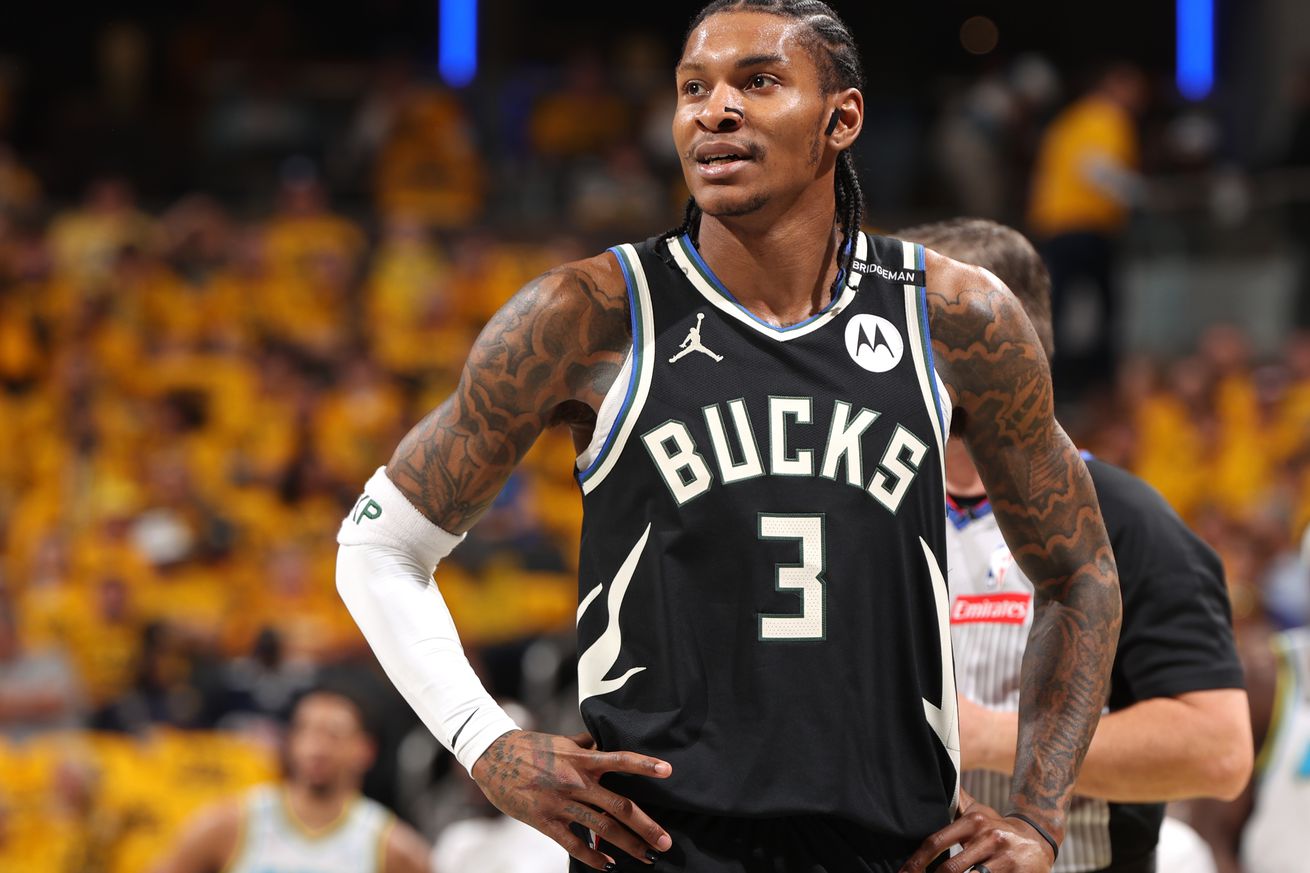
KPJ will remain in Milwaukee on a two-year deal
Almost 90 minutes into the free agency period, the Bucks have made their first move by retaining presumptive starting point guard Kevin Porter Jr. to a two-year contract, reportedly worth $11m according to ESPN’s Shams Charania. The second year is a player option, just like the one Porter declined yesterday in order to become an unrestricted free agent, so he could reenter free agency again in 2026.
FROM SHAMS:
Free agent guard Kevin Porter Jr. has agreed to a two-year, $11 million deal to return to the Milwaukee Bucks, with a player option in 2026-27, sources tell ESPN. The Bucks prioritized bringing back Porter and finalized a deal tonight with his agent Sam Permut of Roc Nation.
— Shams Charania Tweets (& Other NBA News) (@shamsbot.bsky.social) 2025-06-30T23:13:34.511Z
Porter came over in a last-minute deadline deal from the Clippers for MarJon Beauchamp, and before long, established himself as a key part of the Bucks’ rotation, particularly when Damian Lillard went down with deep vein thrombosis. He averaged 11.7 PPG and 3.7 APG with Milwaukee on outstanding .494/.408/.871 shooting, steadily upping his minute totals to finish the regular season at 19.9 MPG. He got off to a slow start in the postseason, but ultimately had similar scoring and three-point shooting numbers: 11.2 PPG and 5.4 APG on .396/.467/.846 shooting. He assumed Lillard’s spot in the starting lineup in Game 5 of the Pacers series.
The details of the contract are important here, and we may not know them tonight. Specifically, KPJ’s starting salary: this may be the biggest indicator of whether or not Milwaukee is using its biannual exception or part of its midlevel exception to sign KPJ. It’s quite possible, perhaps likely, that Shams is rounding up here, but the most a team can offer on its biannual exception is two years, $10.5m, limited to a $5.1m salary in year one. The player only gets a 5% raise in year two.
Otherwise, a two-year, $11m contract suggests a $5.4m salary in year one and a 5% raise in year two up to $5.6m. That would necessitate to using part of the $14.1m midlevel exception in order to be signed, so Milwaukee would have about $8.7m remaining on that exception, perhaps to use in re-signing Gary Trent Jr., who they also don’t hold Bird rights on and would need to sign with an exception. It would mean they could use the $5.1m BAE on someone else, though.
When further contract details come out, we’ll update this story. Until then, welcome back Scoot.
UPDATE: Porter did indeed get the biannual exception, according to The Athletic’s Fred Katz. He clarified that KPJ’s contract is for that two-year, $10.5m figure, with the $5.1m starting salary. This means two crucial things for the Bucks’ next moves: 1. they still have all $14.1m of their full midlevel exception, and 2. they are now hard-capped at the $195.9m first apron by using the BAE. They cannot cross that figure for any reason between now and next June 30th.
That might sound ominous, but fear not, because they have $167.3m committed to 10 players right now. Factoring in Kyle Kuzma’s unlikely benefits, which do count towards the first apron, Milwaukee has $25.8m in space beneath it. They’ll need to fill at least four of their remaining five roster spots to comply with NBA rules. And since using more than $5.7m of their MLE would hard cap them at the first apron anyway, there’s no reason not to use all $14.1m from it.
